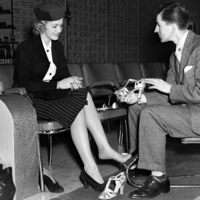Yes, shoes can be considered utilitarian, but for many people they are valued. How far does this love go? Former First Lady of the Philippines Imelda Marcos opened the Marinka Shoe Museum in the early 2000s to show her more than 2,700 pairs of shoes. Shoes don’t have to be fancy to be meaningful. A favorite pair of mud boots can warm the heart, while sneakers can boost a bond for life.
Over the past 300 years, the shoe industry has evolved from bespoke shoes designed for the first settlers by cordwainers (shoemakers who work leather) to family-run shops selling must-haves like Bass moccasins, boots Frye and Birkenstock sandals. . The shoes of fashion icons Jimmy Choo, Manolo Blahnik and Christian Louboutin make shoe fanatics starry-eyed.
The United States has the largest footwear market in the world, grossing more than $100 billion in 2021 alone, according to The NPD Group. Industry giants like Foot Locker, New Balance and Clark’s are raking in a good chunk of this market. For example, Nike’s sales were $44.5 billion last year.
So it’s no surprise that Americans spend an average of $419 a year on shoes. Where have they shopped over the years? Wicked Reports shares the story of buying shoes in the United States, from specialty shoemakers to online retailers.

